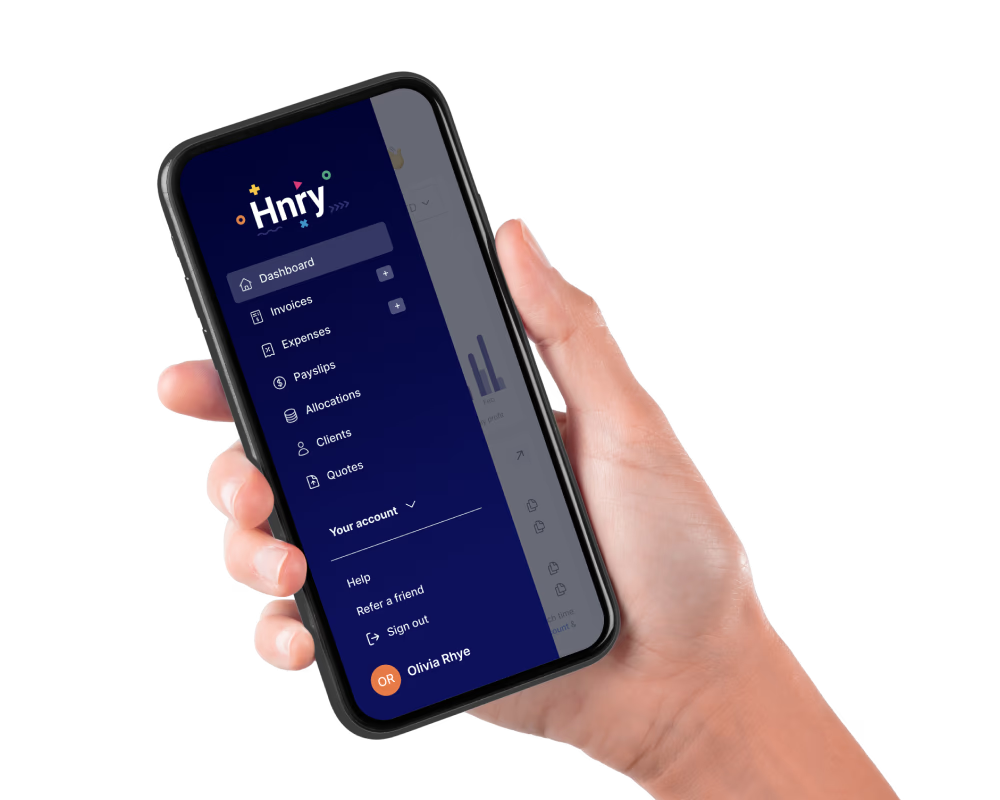As a sole trader, it can be tricky to figure out how much to set aside for your annual tax bill.
That’s why we decided to create our own tax calculator, specifically for sole traders.
Enter your:
- sole trader income,
- PAYG income (if applicable),
- tax deductions claimed,
- student loan status,
- voluntary superannuation contributions (optional)
and get a rough estimate of what you’ll owe at the end of the financial year (EOFY). Easy!
Sole trader tax calculator FY 2024/25
Disclaimer: Please note the numbers shown above are an estimate based on the figures you have provided. If you have any questions, please reach out to the team.
💡 This tax calculator is for the 2024/25 financial year, which is slightly different from previous years due to the stage three tax cuts. Check out our explainer on what’s changed and why.
Key taxes, levies, and payments for sole traders
Income tax
You’re required to pay tax on all your income, whether it comes from a full time job or a self-employed gig – unless of course, you earn under the tax-free threshold ($18,200).
The ATO calculates your income tax by adding up your earnings from all your sources of income (PAYG/salary jobs, self-employed income, investment income etc) and applying an effective tax rate as per our progressive tax rate system.
If you’re a side-hustler, there’s sometimes confusion around why tax is higher on a secondary income, and how to calculate the amount of tax owed on self-employed earnings – but rest assured, the income tax rates for salaried earners and self-employed individuals are exactly the same.
📖 Still not making sense? We explain in more detail in our guide to tax rates.
GST
If you expect to earn over $75,000 in self-employed income over the next 12 months, you’ll be required to register for and charge GST.
What this means is that you’ll need to charge customers an additional 10% GST on top of your regular prices. This 10% is then payable to the ATO whenever you lodge your BAS.
If you make business purchases, the GST you pay on these will reduce the amount of the GST you owe to the ATO.
📖 For more information, check out our sole trader guide to GST.
Medicare levy
On top of income tax, you’ll also need to pay the Medicare levy for your self-employed income. This is levied 2% of your earnings, provided you’re within certain earnings thresholds. If you are a lower earner, you may be eligible for a reduction, or an exemption. If you’re a higher earner, and you don’t have private health insurance, you may need to pay the Medicare levy surcharge – an extra 1%-1.5%, depending on your situation.
📖 We cover the Medicare levy, the Medicare levy surcharge, and more in our sole trader guide to Medicare.
💡 While Hnry will calculate and pay your Medicare levy on your behalf, we won’t be able to sort your Medicare levy surcharge. The surcharge calculation depends on things Hnry might not be aware of, like your level of Private Health Insurance cover, how much your spouse earns, and if you have any dependents. For more information, check out our guide to Medicare.
Student loan repayments
If you currently have a student loan, and you’re earning over the annual threshold of $56,156 in the 2025/26 financial year, you’ll be required to make repayments on that loan at a rate determined by your income level.
This rate applies to your sole trader income, as well as your PAYG income – there’s no way around it, sorry!
📖 Check out our handy guide to paying off your student loan as a sole trader.
📖 Confused about the recent changes to HECS loan indexation? We have a guide for that too.
How Hnry Helps
Hnry is an award winning app and tax service, designed specifically for sole traders. For just 1% + GST of your self-employed income, capped at $1,500 a year, Hnry will calculate and pay all your taxes, levies and whatnot for you, including:
We also lodge your annual tax return for you – it’s all part of the service. Better still, using the Hnry platform costs less than using a traditional accountant, and is entirely tax deductible.
If that sounds good to you, join Hnry today. Never think about tax again!
Share on:

